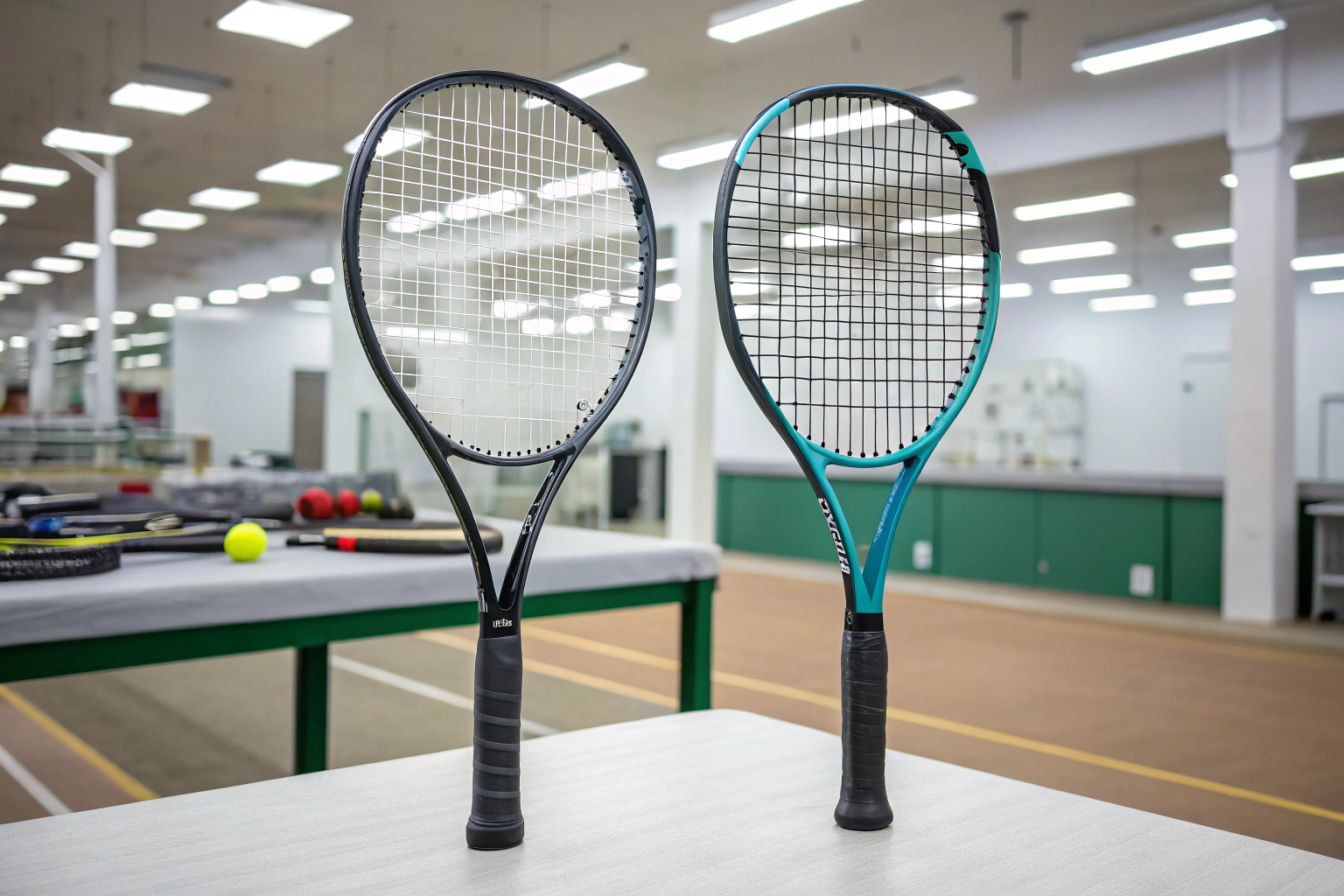Choosing the right weight for your tennis racquet is one of the most important decisions you’ll make when buying a new one. Should you go for a lighter racquet that offers more maneuverability or a heavier one that provides greater stability and power? In this guide, we’ll help you decide which racquet weight suits your playing style and needs.

The weight of your tennis racquet influences power, control, and comfort. Lighter racquets offer more maneuverability, while heavier ones provide more stability and power.
The weight of your tennis racquet can dramatically change how you play. Let’s explore the pros and cons of lighter and heavier racquets and help you determine which one fits your playing style.
Lighter Tennis Racquets – Advantages and Disadvantages
Lighter tennis racquets typically weigh between 260 and 280 grams (9-10 ounces). These racquets are designed for players who value speed and quick reactions.
Lighter racquets are ideal for players who prioritize maneuverability, quick reflexes, and easier handling. However, they may sacrifice power and stability.
Advantages of Lighter Racquets:
- Maneuverability – Lighter racquets allow for quicker swings, making them ideal for fast-paced games. If you’re playing doubles or you like playing at the net, lighter racquets can help you react faster.
- Less Strain – With a lighter racquet, there’s less strain on your wrist and arm, reducing the risk of injury, especially for players with a history of joint issues.
- Faster Reaction Time – Lighter racquets make it easier to adjust to fast shots and change directions quickly, which is essential for players who rely on agility.
Disadvantages of Lighter Racquets:
- Less Power – Because of their reduced weight, lighter racquets do not provide as much power on serves or groundstrokes. You’ll need to generate more force through your own swing.
- Less Stability – Lighter racquets are less stable when hitting hard shots or encountering heavy ball spins. This may lead to a less comfortable feel on off-center hits.
Lighter racquets are often favored by beginner and intermediate players, who are still developing their technique and need a more forgiving frame. They’re also popular with players who want to focus on control and speed rather than raw power.
Heavier Tennis Racquets – Advantages and Disadvantages
Heavier tennis racquets typically weigh between 300 and 340 grams (10.5-12 ounces). These racquets are built for players who want more power and stability in their shots.
Heavier racquets provide more power and stability, but they require more strength and stamina to wield effectively.
Advantages of Heavier Racquets:
- More Power – Heavier racquets generate more power, which is especially beneficial on serves and groundstrokes. The added weight allows the racquet to naturally absorb more impact and transfer it to the ball.
- Stability – Heavier racquets are more stable when hitting fast or spin-heavy shots. They provide a solid feel, which allows for better control on off-center hits and less vibration.
- Better for Advanced Players – Heavier racquets are favored by advanced players who have the strength and technique to handle them. They can generate more power with less effort and maintain better control of their shots.
Disadvantages of Heavier Racquets:
- Less Maneuverable – A heavier racquet requires more effort to swing, making it slower to react to fast shots. This can be a disadvantage in fast-paced exchanges, especially for players who rely on quick reflexes.
- Strain on the Body – Using a heavier racquet demands more strength from the arms, wrists, and shoulders. Over time, this may lead to fatigue or strain, especially for players who don’t have the proper technique.
Heavier racquets are often preferred by advanced or competitive players, as they offer more control and power. Players with a more developed technique and stronger build will benefit from the stability and precision of heavier frames.
Which Tennis Racquet Weight is Right for You?
Choosing between a lighter and heavier racquet depends largely on your playing style, experience level, and physical condition. Here are some factors to consider:
The right weight for your tennis racquet depends on your skill level, style of play, and comfort.
For Beginners:
- A lighter racquet (260-280 grams) is often the best choice for beginners. It allows for easier maneuverability and faster learning while minimizing strain on the wrist and arm.
- Lightweight racquets are also forgiving on off-center hits, helping beginners improve their form and accuracy.
Additional Considerations When Choosing Racquet Weight
While weight is an essential factor, there are other considerations to keep in mind when choosing a racquet:
Consider grip size, balance, string tension, and your playing style when selecting a racquet.
- Grip Size: A racquet with an incorrect grip size can lead to discomfort and poor control. Be sure to select a grip size that feels comfortable and secure in your hand.
- Balance: The balance of the racquet (head-heavy, head-light, or evenly balanced) also affects how it performs. Head-heavy racquets provide more power, while head-light ones offer better maneuverability.
- String Tension: The string tension can impact both power and control. Higher tension gives better control, while lower tension generates more power. Consider string tension as a complementary factor to your racquet weight.
Conclusion
The choice between a lighter or heavier tennis racquet depends on your playing style, experience level, and physical condition. Lighter racquets are great for maneuverability and control, while heavier racquets provide more power and stability. Consider your playing style and preferences to choose the right racquet weight that helps elevate your game to the next level.